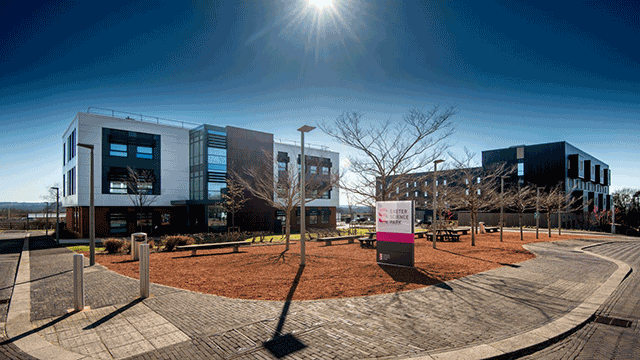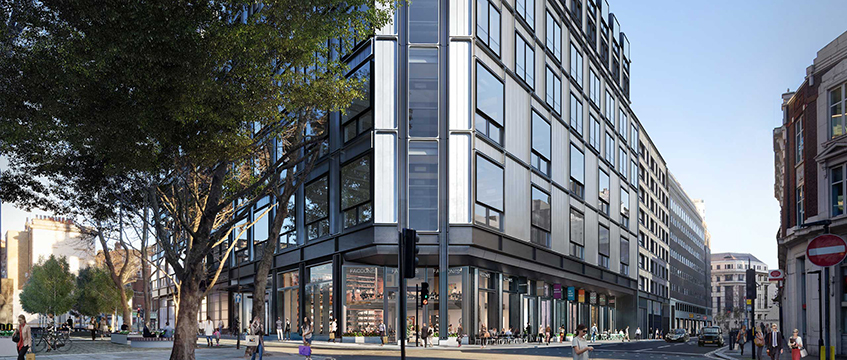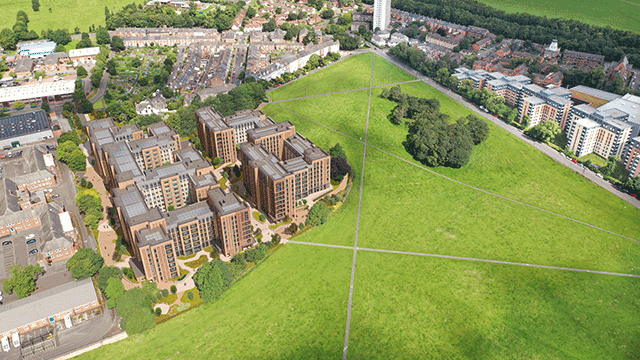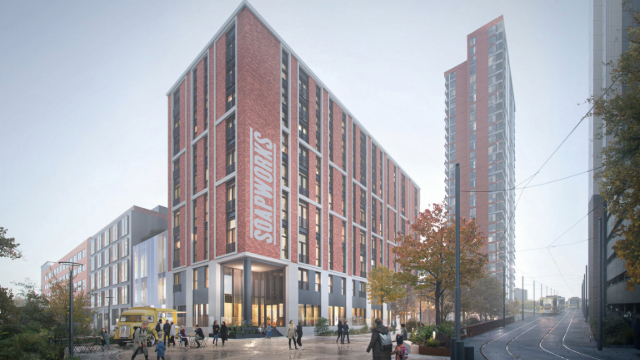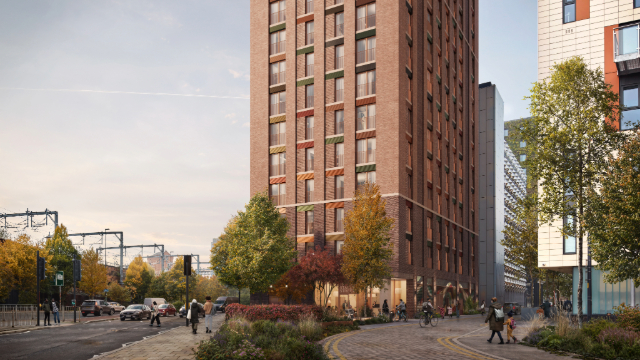Nationwide is returning to Holborn with a vision to create an innovative tech hub. Here director Richard Newland discusses the building society’s real estate strategy and why it is investing £350m in its branch network.
 More than three decades after moving its headquarters out of London’s Midtown, the world’s largest building society is returning to Holborn, but this time to create a 91,000 sq ft tech hub at Oxford Properties Group and Brockton Capital’s Post Building, WC1.
More than three decades after moving its headquarters out of London’s Midtown, the world’s largest building society is returning to Holborn, but this time to create a 91,000 sq ft tech hub at Oxford Properties Group and Brockton Capital’s Post Building, WC1.
EG caught up with the man responsible for transforming Nationwide’s portfolio, director of branch and workplace Richard Newland, to find out more about the return to Midtown, the building society’s real estate strategy in an increasingly digital banking world and its commitment to retain physical branches in communities where it is already present until 2021.
Back to the future
Looking out over London’s skyline from the sunny roof terrace of the Post Building, Newland takes a step back in time, pointing out the company’s former Holborn headquarters. The building society set down roots in Midtown in 1893 and stayed in the area until 1992 when it moved its HQ to Swindon, Wiltshire.
But Nationwide did not choose Oxford and Brockton’s 320,000 sq ft redevelopment of the former Royal Mail sorting office on New Oxford Street, WC1, to step back in time and reminisce. The building was selected to attract the talent of the future.
“We looked across London, across the UK, and settled on this building because the primary purpose for us was attracting talent,” says Newland. “This building is incredibly well connected, with two Tube stations equidistant either side, and when we looked at the sort of people we want to recruit – which is developers and engineers – the availability of talent was around 300,000 to 450,000 [potential employees] in London. This building was in the best location in terms of the availability of talent to get to us.”
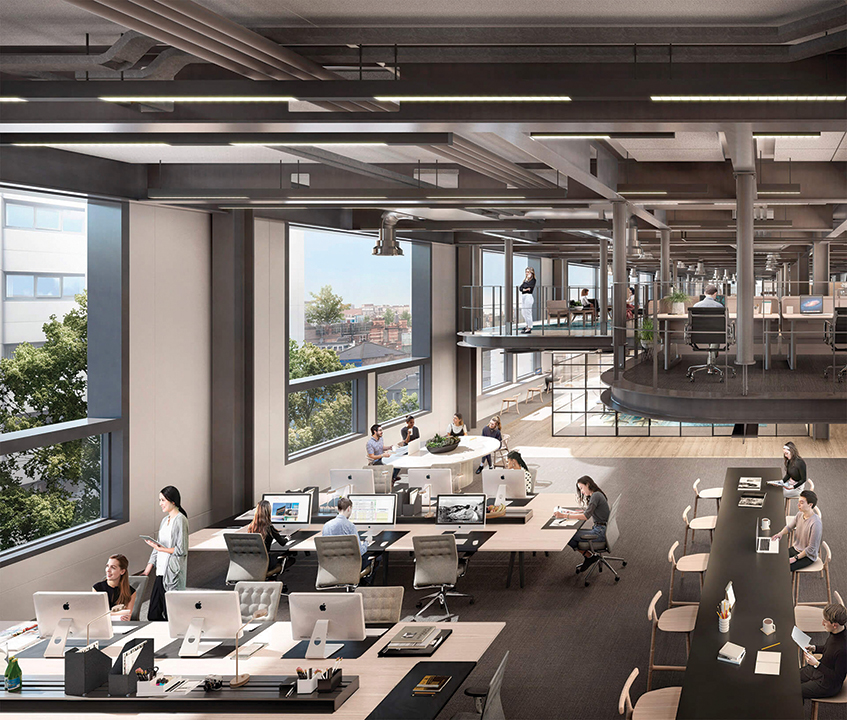
The Post Building sits between Tottenham Court Road station, where the new Elizabeth Line will bring potential employees from as far west of London as Reading in Berkshire, and Holborn Tube station. Tottenham Court Road is forecast to have more than 170,000 passengers per day passing through it once the Elizabeth Line opens, while Holborn Tube station, one of the busiest in the capital, is used by around 56m passengers per year.
Nationwide’s new tech hub in Midtown is one of the first physical manifestations of plans to invest £1.3bn in its tech transformation, which in turn is part of a wider five-year £4.1bn investment strategy that will include the creation of another tech hub on a recently acquired site in Swindon.
The Swindon tech hub at Ramsbury House at Kembrey Park will be in addition to its current HQ at Pipers Way in the Wiltshire town and will house 700 developers and engineers on top of the 750 being recruited for the London hub.
It will also be a place for local groups and businesses to meet and innovate, replicating the building society’s 4C branch design, which features community space, Nationwide has said.
Innovation hub
In London, Nationwide’s four-floor tech hub will house a new development and innovation hub for those working in the digital, data, engineering, architecture, development operations and design specialisms.
The hub will broadly focus on service, product and proposition enhancements, the simplification of Nationwide’s data landscape and improving its resilience. The hub will also be used for its Open Banking for Good challenge, which will see Nationwide partner with other organisations to develop Open Banking-based apps and services to help financially vulnerable people, and its business banking proposition.
Included in the space is a floating deck which will have Nationwide’s own “Spanish steps” leading down to the first level to create a 250-capcity auditorium and space to hold internal and external events. There will also be a café on the same level and a second staircase connecting all four floors.
Designed by Nationwide’s internal team and MCM, the firm which designed Estee Lauder’s London HQ, the space will be entirely flexible, with only five meeting rooms provided.
Newland says the brief has been to “not over design it because the industrial nature of the building is fab”.
He adds: “We’ve also got our existing design as we need to make sure this doesn’t come across as opulent or extravagant. We need to make sure we are spending our members’ money wisely, but it also has to be fit for purpose for attracting the people we want.”
The people Nationwide wants to attract will boost its in-house skills to help the society build on its existing technology. They will be tasked with creating from scratch a new digital platform to allow new products to be developed to meet the changing needs of the building society’s 15.9m customers.
Future-proofing
The tech investment is part of Nationwide’s future-proofing of its business, which will also see it increase its investment in AI and machine learning to advance its analytical capabilities.
In a world where banking is becoming almost completely digitised, the building society wants to make sure that it is adapting to meet the changing needs of consumers.
The ongoing demand for digital services – use of Nationwide’s banking app increased by 200m log-ins in 2017 – undoubtedly brings with it a decline in the use of Nationwide’s physical branches, the transformation of which Newland is also tasked with.
However, while banking rivals including Royal Bank of Scotland, HSBC and NatWest have been forced to shutter hundreds of retail branches in recent years, Nationwide’s comparatively small portfolio means it doesn’t have to be so drastic in its closures.
Branch revamp
As part of its £350m five-year revamp of its UK branches, two-thirds of which it owns the freehold to, it will be reducing its 670-branch portfolio by 20 to 650.
Nationwide says it will spend £80m of its £350m investment pot this year, bringing a more digital banking experience to its physical branches. The newly designed branches will have fewer physical barriers between staff and customers, free WiFi and a high-definition video link to personal banking managers and specialist consultants who may not be physically available in branches.
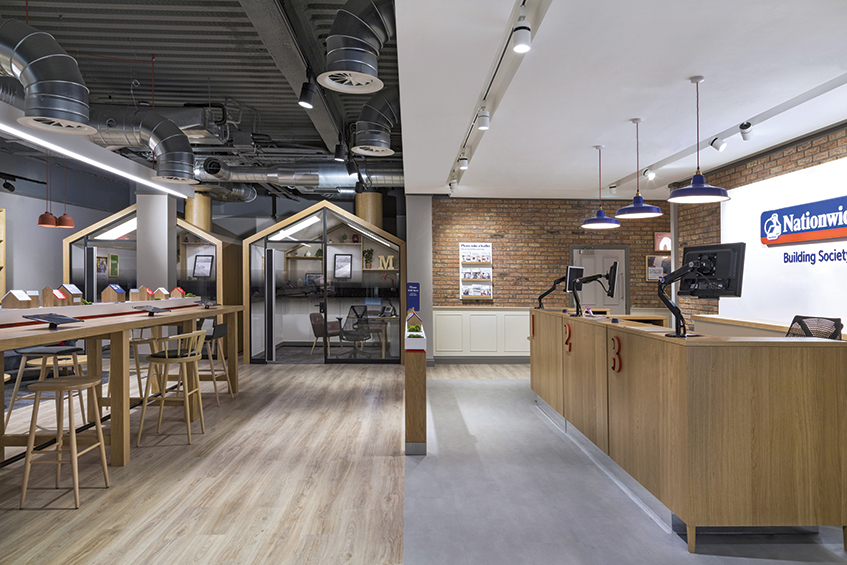
“We still believe fundamentally that the high street has a role to play in financial services and that’s why we’re investing,” says Newland. “We can’t say that in the next five years the market won’t change or the way people use branches won’t continue to change, however, we firmly believe people will still want a face-to-face conversation.”
He adds: “We are talking to local government as well as national government about what we can do to support the future of the town centre. There’s one of our branches, for example, which has surplus space upstairs and we are working with the local government about how we can offer that space for free in the short term for incubation or for small start-ups.”
He adds that in branches with excess space on the upper levels and the potential for a separate entrance, the business could team up with housing associations to deliver residential space.
“What the branches are being used for, the number of transactions, the declining use of ATMs, will continue to be a challenge,” says Newland. “But I fundamentally believe people will still want face-to-face contact, particularly when it comes to things like fraud advice, opening new accounts or life accounts.”
For now though, Newland’s most pressing concern is getting the tech hubs fitted out and occupied, with the new base in Swindon due to open in November and a phased moved back to Holborn beginning in January.
Fact file: Nationwide
- 135 years old
- 15.9m customers and 18,000 employees
- 670 retail branches
- Its headquarters are in Swindon and it has 19 administrative buildings across the country, including in Bournemouth, Northampton and Glasgow
- Nationwide was based at 15 Southampton Row from 1894-1903; 22 Red Lion Square from 1903-1929; 142 High Holborn between 1941-1946 (it was required to move its office during the war as its previous head office on Hart Street was used by the government as a clothing coupons centre); New Oxford House (renamed Chesterfield House in 1962) on Bloomsbury Way from 1946-1962; and New Oxford House, 136 High Holborn from 1962-1992
- 260 staff are based at its current London office at 1 Threadneedle Street, EC3. The building society occupies 53,691 sq ft in the building on a 20-year lease from 2012
- It reported pretax profit of £833m for 2018/19, down from £977m in 2017/18 owing to technology asset write-offs and additional IT investments. Underlying income for 2018/19 was just over £2.9bn.
The Post Building
- 320,000 sq ft of offices and shops being developed by Oxford Properties and Brockton Capital on the site of the former Royal Mail sorting office in Midtown
- Works are due to complete this summer
- Nationwide has prelet 91,000 sq ft and will also be putting in a new retail branch at ground level
- Rothesay Life has prelet 49,000 sq ft and global consultancy McKinsey & Company will move in to 127,000 sq ft from the end of August
- Rents are quoted in the high £80s per sq ft
- The building features a communal 7,500 sq ft rooftop garden, 5,500 sq ft lobby and 438 cycle spaces
- The leasing agents are JLL, CBRE and Pilcher Hershman.
To send feedback, e-mail louise.dransfield@egi.co.uk or tweet @DransfieldL or @estatesgazette




